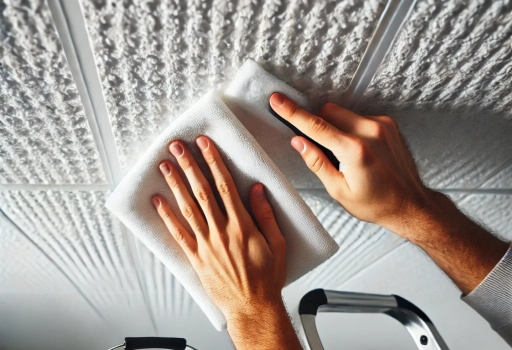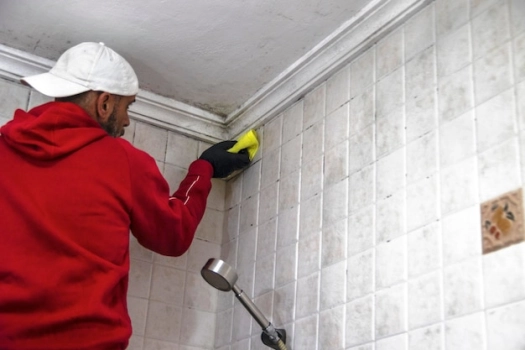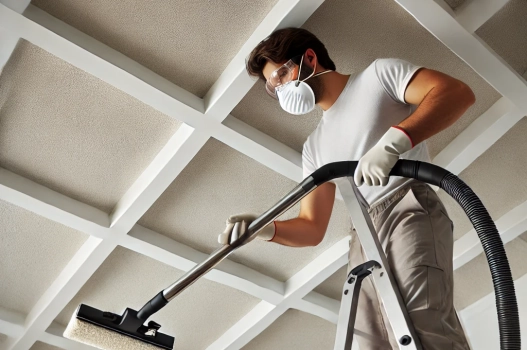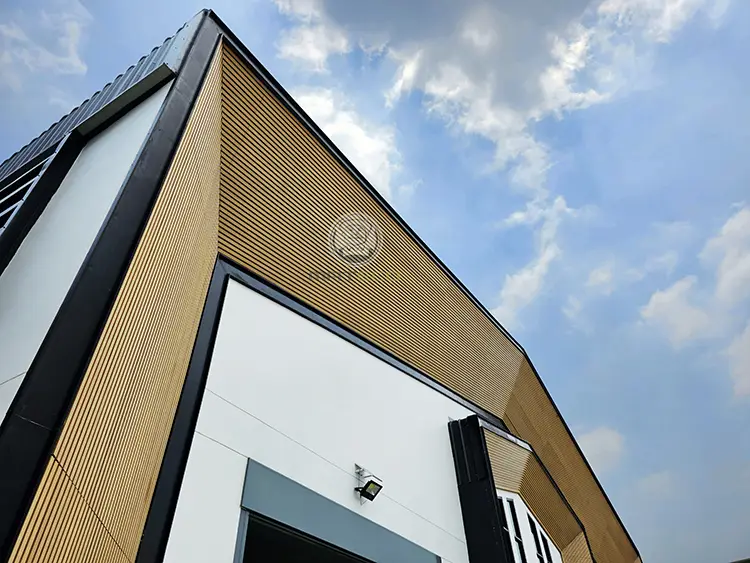How to Clean Ceiling Tiles?
Cleaning ceilings may not be the first thing on your cleaning to-do list, but it is essential for maintaining a healthy, attractive home or workspace. Dust, dirt, and even mold can accumulate on ceilings over time, potentially affecting air quality and the overall appearance of your interiors. Whether you have traditional or uncoated ceiling tiles, regular cleaning can prevent these issues and extend the life of your ceilings. This guide will walk you through why ceiling cleaning is important, the essential equipment you'll need, step-by-step instructions for cleaning, and specific tips for handling uncoated ceiling tiles.

Table of Contents
Why Clean Ceilings
Ceilings, often overlooked, can collect dust, grime, and even cobwebs. Regular cleaning is crucial for several reasons:
Air Quality: Dust and allergens on the ceiling can circulate through the air, aggravating allergies and respiratory issues.
Aesthetic Appeal: Clean ceilings enhance the overall look of a room, making it feel fresher and more inviting.
Mold Prevention: In damp areas, ceilings can develop mold or mildew, which poses health risks and can damage the structure.
Longevity: Regular maintenance can extend the lifespan of ceiling materials, especially for those made from wood-plastic composites (WPC).
Essential Equipment for Cleaning Ceilings
Before you start, gather the necessary equipment to ensure an effective and safe cleaning process:
Ladder or Step Stool: To reach high ceilings safely.
Vacuum Cleaner with Attachments: For removing loose dust and cobwebs.
Microfiber Cloths: Soft and non-abrasive for wiping surfaces.
Soft-Bristle Brush: To gently scrub without damaging the ceiling.
Bucket: For mixing cleaning solutions.
Mild Detergent or Ceiling Cleaner: Specifically formulated for your ceiling type.
Spray Bottle: For applying cleaning solutions.
Protective Gear: Gloves and safety glasses to protect your skin and eyes.

How to Clean Ceiling Tiles without Removing Them
Follow these steps to clean your ceilings efficiently:
Prepare the Area:
Remove or cover furniture and flooring to protect them from dust and cleaning solutions.
Ensure the room is well-ventilated.
Dust Removal:
Use a vacuum cleaner with an extension wand to remove loose dust and cobwebs.
Follow up with a microfiber cloth to catch any remaining particles.
Spot Cleaning:
Inspect the ceiling for any stains or spots.
Apply a mild detergent solution using a spray bottle.
Gently scrub the stained area with a soft-bristle brush.
General Cleaning:
Dampen a microfiber cloth with your cleaning solution.
Wipe the ceiling in small sections, starting from one corner and working your way across.
Avoid soaking the cloth; it should be damp, not wet, to prevent moisture damage.
Rinse and Dry:
Rinse the cloth frequently in clean water to avoid spreading dirt.
Once the ceiling is clean, use a dry microfiber cloth to remove any excess moisture.

How to Handle Uncoated Ceiling Tiles
Uncoated ceiling tiles, such as those made from porous materials, require extra care:
Gentle Cleaning Solutions:
Use a solution specifically designed for uncoated or porous materials to avoid damage.
Minimal Moisture:
Avoid using excessive water. A damp cloth is sufficient.
Test the cleaning solution on a small, inconspicuous area first.
Vacuum First:
Use a vacuum cleaner with a brush attachment to remove loose dirt before applying any cleaning solutions.
Spot Treat Stains:
For stubborn stains, use a soft brush and a mild detergent solution. Pat the area dry with a clean cloth.
How Often Should Ceilings Be Cleaned
The frequency of ceiling cleaning depends on several factors:
Location: Ceilings in kitchens and bathrooms should be cleaned more frequently due to grease and moisture.
Environment: Homes with pets or in dusty areas may require more frequent cleaning.
Air Quality: Regular ceiling cleaning can improve indoor air quality, so consider cleaning every 3-6 months for the best results.
By following these guidelines, you can keep your ceilings looking pristine and ensure a healthier living environment. Regular maintenance not only enhances the appearance of your space but also prolongs the life of your ceiling materials, especially important for WPC and other delicate surfaces.
If you are looking for a WPC manufacturer, MATECO will be your best choice.
Website: https://www.matecowpc.com
WhatsApp: +86-13380085620
Email: info@matecowpc.com
















